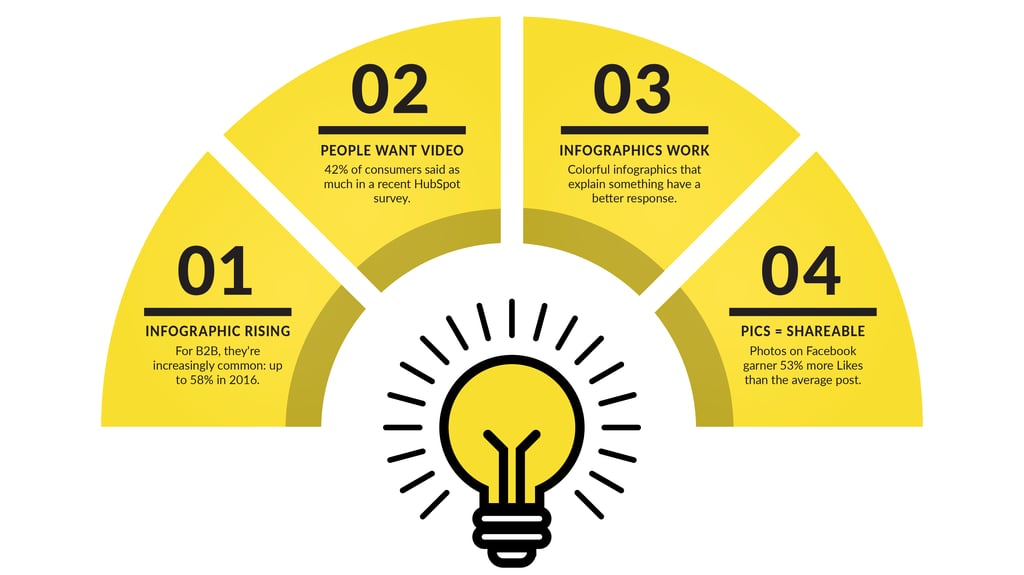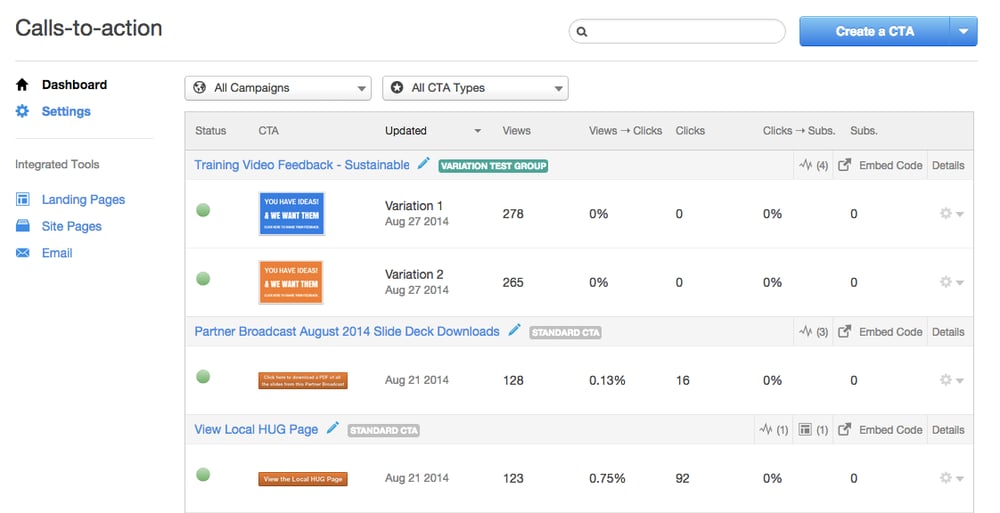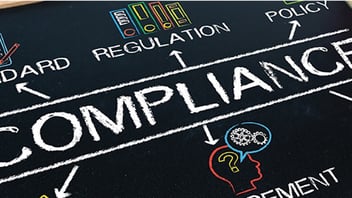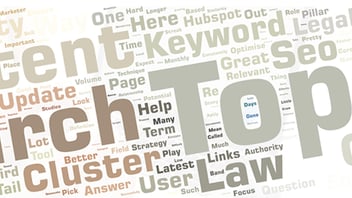“One of the exciting things about the Internet is that anyone with a PC and a modem can publish whatever content they can create.” - Bill Gates
Whilst modems (hands up, who remembers modems?) are a thing of the past, the rest of this statement still holds true. With the right tools, just about anyone can churn out content like there’s no tomorrow. Your churning could become so prolific that you end up with a book deal!
All the while, when you’re churning, it’s always important to consider the audience you’re talking to.
Did you know that 97% of law firms don’t even have any personalised content? Content marketing for legal services that isn’t personalised is a bit like shooting arrows in the dark - there’s no target to aim for. So make sure you’re thinking about who your target audience is and what information they would most be interested in.
You’ve got the tools, and Digital Media Stream, a legal marketing services provider based in Manchester, is here to give you the know-how. We’ll show you how to create legal content with purpose and meaning with six easy tips.
1. Writing Style Guide
Knowing who you are as a law firm and how you want to be seen and heard in the digital world is an important part of writing great content.
We recommend creating a style guide for your writing that is easy to follow and comprehend by everyone who will use it - people like content writers, PR, social media people, and even any digital growth agencies you collaborate with. It allows for consistency across the board and put your team in a better position to attribute a unique, personalised voice for your company.
Here are some good things to include in your style guide.
Spelling & Grammar
Let’s be honest. If you read a piece of content with poor spelling and grammar, how much would you trust the authority of that piece and whoever wrote it? Not much I bet.
59% of people are less likely to use a service or product if there were obvious spelling or grammar mistakes.
We recommend using a checker tool such as Grammarly for your own peace of mind.
Tone of Voice
This section is where you would detail how your content to should sound to a reader. For example, do you want to sound academic, educational, empathetic?
Try picking a few different elements for your brand’s voice that work well together to avoid your content coming across as monotonous.
Formatting
Properly formatted content can mean the difference in catching a reader’s attention or losing it altogether and abandoning the website.
Keep the following in mind when it comes to formatting:
- Whitespace: This is literally the whitespace in and around your content. Evenly space out your content so that it makes things easier - both on the eyes and for the reader to consume.
- Headings: These should be obvious and explain exactly what the reader is about to take in.
- Italics, Bold, Underlining: These are great tools to help emphasise important words or messages within your content - especially if a reader is skimming. (See what we did there?)
Content Examples
Provide examples of how your content should be written using the tips above - but also give examples of how it shouldn’t be written. Showing the contrast in styles side by side is a great visual aid to helping any writer - even a new hire or freelancer - best understand your way of writing.
Citing References
If you have a preferred referencing system that you want everyone to follow when citing sources, then explain (again, with examples) how you want it done.
Your Writing Style Guide is the foundation of your legal content and will make the editing process that much smoother. Download HubSpot’s free eBook to show you how to create your own guide.
2. Back up your Claims
As a lawyer, you’re tasked with providing accurate information to your clients. So it goes without saying that you should do the same with your content.
In the Fake News Era, anything written on the internet can easily become an accepted “truth” simply by being shared countless times across the globe. The inability to fully verify an idea or quote in time has existed for a long time, which only reinforces that truth.
You can avoid mistrust in your content by using verified, value-driven statistics from authoritative sources to back up your content. This will portray you as a credible source of information and authority with your readership.
The better your sources, the better your law firm can increase the authority and quality of your content online.
3. Change It Up With Visuals
Great content can provide your law firm ample reach. However, make sure your content doesn’t get caught out by the JAB trap (Just Another Blog).
The “JAB” Trap is where a reader is unable to distinguish between two blogs side by side which is chock-full of words. And nothing else. It’s hardly exciting or engaging.
While words are important, it’s important to understand the power and value of visuals:
-
When legal firms use video in their marketing, web traffic from search engines rises 41%.
-
80% of people are more likely to read a piece of content that includes coloured visuals.
-
Articles with images have double the amount of shares on social media than those without.
-
Infographics are shared three times more than any other content.
So visual content is here to stay and your content strategy can drive home that value. Here are just two tactics you can use in your content marketing:
- Slideshare Presentation blog posts bring life to your blog, as Pamela Vaughn writes below:
“Posts that are built around a specific SlideShare presentation do require a little bit more time investment and design savvy than the average text-based post, but the results are usually worth it. Content that lends itself well (but isn't limited) to SlideShare presentations include the curation of visual examples, quotes, charts, quick takeaways, and general storytelling.”
- Infographics are a more engaging form of content marketing than text. Internet users pay more attention to relevant images with wording than they do reading page text on the page:

Six out of 10 B2B businesses agree: visuals like infographics are a preferred way to attract prospects and leads.
4. Cut-out the Jargon
When talking to your legal peers, you may lose sight of how much industry jargon (technical terms) you may be using. In this instance, it’s OK, because you’re on the same level of understanding.
But when writing your content for people from outside the legal profession, it’s important to note who you’re talking to; potential clients who aren’t inclined to know legalese. For that reason, it’s best to avoid using technical legal terms in your content, lest they are lost on your audience.
For example, would the average potential client understand what “hereditament” means? A better way to put it would be in more understandable terms: “a property which is capable of being inherited.”
Technical jargon can be frustrating when the reader isn’t fully inclined to understand what you mean. Next time you write a piece of content, just think, “If I wasn’t a lawyer, would I understand this?”
5. Give It a Purpose
So you’ve written some amazing content, but where does it take your reader?
The purpose of your content is to drive them toward some sort of action. To do that, all you need to know is how to create a button or link-triggered “Call-To-Action”. With HubSpot, you can learn best practices when it comes to creating a call-to-action that works, including popover windows, lead nurturing, and even event promotions.

Call-to-actions give your content purpose: to drive a prospect from your engaging subject matter to a valuable offer (and eventually, toward becoming a customer). Using call-to-actions for an offer on your blog is a great way to generate more leads.
6. Re-Purpose Content
Any information you hold can be re-purposed in another content format that will delight your readers.
For example, if your firm has previously released a whitepaper, case study, or even legal research - you have the perfect opportunity to re-package it into something brand new and fresh.
Think of it in the way you would treat a social media post for the same link: you’d write it differently on LinkedIn than you would for Twitter. When re-purposing, tailor the content in the way that the platform’s audience expects it to be packaged.
Here are a few ideas of different content types you can re-purpose your content into:
-
eBooks
-
Webinars
-
SlideShare/Presentations
-
FAQs
-
How To Guides
-
Infographics
Even if the content you’re re-purposing isn’t relevant anymore, see how you can update it so that is it. For instance: update stale statistics with more recent ones.
CONCLUSION
The means of writing remarkable legal content is a constantly evolving process, one which requires practitioners to evolve as well.
Perhaps Ernest Hemingway said it best: “We are all apprentices in a craft in which no one becomes a master.”
For inbound marketing, it’s essential to monitor what works well and evolve your content accordingly.
The ability to develop continuously is a must for legal content marketing. By taking stock of our six tips, you can become a remarkable, must-follow resource for what your law firm does best.
What's Next?
Ensure your marketing strategies are not outdated by downloading our free eBook, Future-Proof Your Marketing.




